Development of a PVDF Sensor Array for Measurement of the Dynamic Pressure Field of the Blade Tip in an Axial Flow Compressor
Abstract
:1. Introduction
2. Sensor Fabrication
3. Sensor Calibration
3.1. Calibration Apparatus and Method
3.2. Calibration Results
4. Experimental Setup
5. Experimental Results
5.1. Single Sensing Point Results and Comparison
5.2. Casing Wall Dynamic Pressure Field (Stable State)
5.3. Casing Wall Dynamic Pressure Field (NSV State)
6. Conclusions
7. Patents
Author Contributions
Funding
Acknowledgments
Conflicts of Interest
Abbreviation
| PVDF | polyvinylidene fluoride |
| PVDF sensor array | PVDF piezoelectric-film sensor array |
| PVDF-01–40 | sensing point 1–40 of the PVDF sensor |
| Kulite-01–05 | Kulite high-response pressure transducer 1–5 |
| 1X | rotating frequency |
| 2X | second harmonic frequency |
| 3X | third harmonic frequency |
| BPF | blade passing frequency |
| NSV | non-synchronous vibration |
| NSVF | non-synchronous vibration frequency |
| sf | sampling frequency |
| LE | leading edge |
| MP | middle part |
| TE | trailing edge |
References
- Xiao, X.; McCarter, A.A.; Lakshminarayana, B. Tip clearance effects in a turbine rotor: Part I—Pressure field and loss. In Proceedings of the ASME Turbo Expo 2000: Power for Land, Sea, and Air, Munich, Germany, 8–11 May 2000; p. V001T003A047. [Google Scholar]
- Fukano, T.; Jang, C.-M. Tip clearance noise of axial flow fans operating at design and off-design condition. J. Sound Vib. 2004, 275, 1027–1050. [Google Scholar] [CrossRef]
- Khalid, S.A.; Khalsa, A.S.; Waitz, I.A.; Tan, C.S.; Greitzer, E.M.; Cumpsty, N.A.; Adamczyk, J.J.; Marble, F.E. Endwall blockage in axial compressors. J. Turbomach. 1999, 121, 499–509. [Google Scholar] [CrossRef]
- Vo, H.D. Role of Tip Clearance Flow on Axial Compressor Stability; Massachusetts Institute of Technology: Cambridge, MA, USA, 2001. [Google Scholar]
- Yamada, K.; Kikuta, H.; Furukawa, M.; Gunjishima, S.; Hara, Y. Effects of tip clearance flow on rotating stall inception process in an axial compressor rotor. Nihon Kikai Gakkai Ronbunshub Hen/Trans. Jpn. Soc. Mech. Eng. Part B 2013, 79, 900–916. [Google Scholar] [CrossRef]
- Vo, H.D. Role of tip clearance flow in the generation of non-synchronous vibrations. In Proceedings of the 44th AIAA Aerospace Sciences Meeting and Exhibit, Reno, NV, USA, 9–12 January 2006; p. 629. [Google Scholar]
- Drolet, M.; Thomassin, J.; Vo, H.D.; Mureithi, N.W. Numerical investigation into non-synchronous vibrations of axial flow compressors by the resonant tip clearance flow. In Proceedings of the GT2009: ASME Turbo Expo Power for Land, Sea and Air, Orlando, FL, USA, 8–12 June 2009; pp. 8–12. [Google Scholar] [CrossRef]
- Thomassin, J.; Vo, H.D.; Mureithi, N.W. Blade tip clearance flow and compressor nonsynchronous vibrations: The jet core feedback theory as the coupling mechanism. J. Turbomach. 2009, 131, 011013. [Google Scholar] [CrossRef]
- Möller, D.; Jüngst, M.; Schiffer, H.-P.; Giersch, T.; Heinichen, F. Influence of Rotor Tip Blockage on Near Stall Blade Vibrations in an Axial Compressor Rig. J. Turbomach. 2018, 140, 021007. [Google Scholar] [CrossRef]
- Wu, Y.; Li, Q.; Tian, J.; Chu, W. Investigation of pre-stall behavior in an axial compressor rotor—Part I: Unsteadiness of tip clearance flow. J. Turbomach. 2012, 134, 051027. [Google Scholar] [CrossRef]
- Wu, Y.; Li, Q.; Tian, J.; Chu, W. Investigation of Pre-Stall Behavior in an Axial Compressor Rotor—Part II: Flow Mechanism of Spike Emergence. J. Turbomach. 2012, 134, 051028. [Google Scholar] [CrossRef]
- Lange, M.; Rolfes, M.; Mailach, R.; Schrapp, H.; Lange, M.; Rolfes, M.; Mailach, R.; Schrapp, H. Periodic Unsteady Tip Clearance Vortex Development in a Low Speed Axial Research Compressor at Different Tip Clearances. In Proceedings of the ASME Turbo Expo 2017: Turbomachinery Technical Conference and Exposition, Charlotte, NC, USA, 26–30 June 2017; p. V02DT46A023. [Google Scholar]
- Berdanier, R.A.; Smith, N.R.; Young, A.M.; Key, N.L. Effects of Tip Clearance on Stall Inception in a Multistage Compressor. J. Propuls. Power 2017, 34, 308–317. [Google Scholar] [CrossRef]
- Kikuta, H.; Iwakiri, K.-I.; Furukawa, M.; Yamada, K.; Gunjishima, S.; Okada, G. Unsteady and Three-Dimensional Flow Mechanism of Spike-Type Stall Inception in an Axial Flow Compressor Rotor. In Proceedings of the ASME-JSME-KSME 2011 Joint Fluids Engineering Conference, Hamamatsu, Japan, 24–29 July 2011; pp. 817–829. [Google Scholar]
- Courtiade, N.; Ottavy, X. Experimental study of surge precursors in a high-speed multistage compressor. J. Turbomach. 2013, 135, 061018. [Google Scholar] [CrossRef]
- Shivang, J.K.; Sharma, N.; Kumar, S. A review on piezoelectric effect and its application with future prospects. J. Electr. Eng. 2016, 10, 7–13. [Google Scholar]
- Jia, Y.; Chen, X.; Ni, Q.; Li, L.; Cheng, J. Dependence of the Impact Response of Polyvinylidene Fluoride Sensors on Their Supporting Materials’ Elasticity. Sensors 2013, 13, 8669–8678. [Google Scholar] [CrossRef] [PubMed]
- Xin, Y.; Guo, C.; Qi, X.; Tian, H.; Li, X.; Dai, Q.; Wang, S.; Wang, C. Wearable and unconstrained systems based on PVDF sensors in physiological signals monitoring: A brief review. Ferroelectrics 2016, 500, 291–300. [Google Scholar] [CrossRef]
- Xin, Y.; Sun, H.; Tian, H.; Guo, C.; Li, X.; Wang, S.; Wang, C. The use of polyvinylidene fluoride (PVDF) films as sensors for vibration measurement: A brief review. Ferroelectrics 2016, 502, 28–42. [Google Scholar] [CrossRef]
- Xin, Y.; Tian, H.; Guo, C.; Li, X.; Sun, H.; Wang, P.; Lin, J.; Wang, S.; Wang, C. PVDF tactile sensors for detecting contact force and slip: A review. Ferroelectrics 2016, 504, 31–45. [Google Scholar] [CrossRef]
- Wang, Y.C.; Huang, C.H.; Lee, Y.C.; Tsai, H.H. Development of a PVDF sensor array for measurement of the impulsive pressure generated by cavitation bubble collapse. Exp. Fluids 2006, 41, 365–373. [Google Scholar] [CrossRef]
- Wang, Y.Q.; Xiao, Y.L. A Dynamic Calibration Test on PVDF Film Pressure Sensor with Dropping Hammer Method. Adv. Mater. Res. 2014, 933, 548–553. [Google Scholar] [CrossRef]
- Fan, Z.Q.; Hong-Hao, M.A.; Shen, Z.W.; Lin, M.J.; Wang, D.B. Piezoelectric property of sandwich PVDF pressure gauge and its calibration device. J. Vib. Shock 2014, 33, 68–71. [Google Scholar]
- Li, Y.; Zhang, X.R.; Tan, H.M.; Liu, X.L.; Pei, M.J. Response of homemade PVDF piezofilm under shock loading and unloading. Chin. J. High Press. Phys. 2004, 18, 261–266. [Google Scholar] [CrossRef]
- Sullivan, C.J.; Mueller, T.J. Polyvinylidene fluoride film sensors for measurement of unsteady pressures on aerodynamic surfaces Part I: Design, fabrication, calibration and demonstration. Exp. Fluids 1999, 27, 79–84. [Google Scholar] [CrossRef]
- Sullivan, C.J.; Mueller, T.J. Polyvinylidene fluoride film sensors for measurement of unsteady pressures on aerodynamic surfaces Part II: Application to a small-scale marine propeller in spatially distorted mean flow. Exp. Fluids 1999, 27, 85–91. [Google Scholar] [CrossRef]
- Lee, I.; Sung, H.J. Development of an array of pressure sensors with PVDF film. Exp. Fluids 1999, 26, 27–35. [Google Scholar] [CrossRef]
- Jinzhou Kexin Electronic Material Co., Ltd. Main Characteristic Parameters of PVDF Piezoelectric Film. Available online: http://www.jinzhoukexin123.com/cn/product_detail-846297-1488868.html (accessed on 20 January 2019).
- Wen, D.Y.; Lin, Q.W. Electrical response of PVDF film under shock loading. Chin. J. High Press. Phys. 2000, 14, 291–297. [Google Scholar] [CrossRef]
- Camp, T. A study of acoustic resonance in a low-speed multistage compressor. In Proceedings of the ASME 1997 International Gas Turbine and Aeroengine Congress and Exhibition, Orlando, FL, USA, 2–5 June 1997; p. V001T003A045. [Google Scholar]
- Hellmich, B.; Seume, J.R. Causes of acoustic resonance in a high-speed axial compressor. J. Turbomach. 2008, 130, 031003. [Google Scholar] [CrossRef]

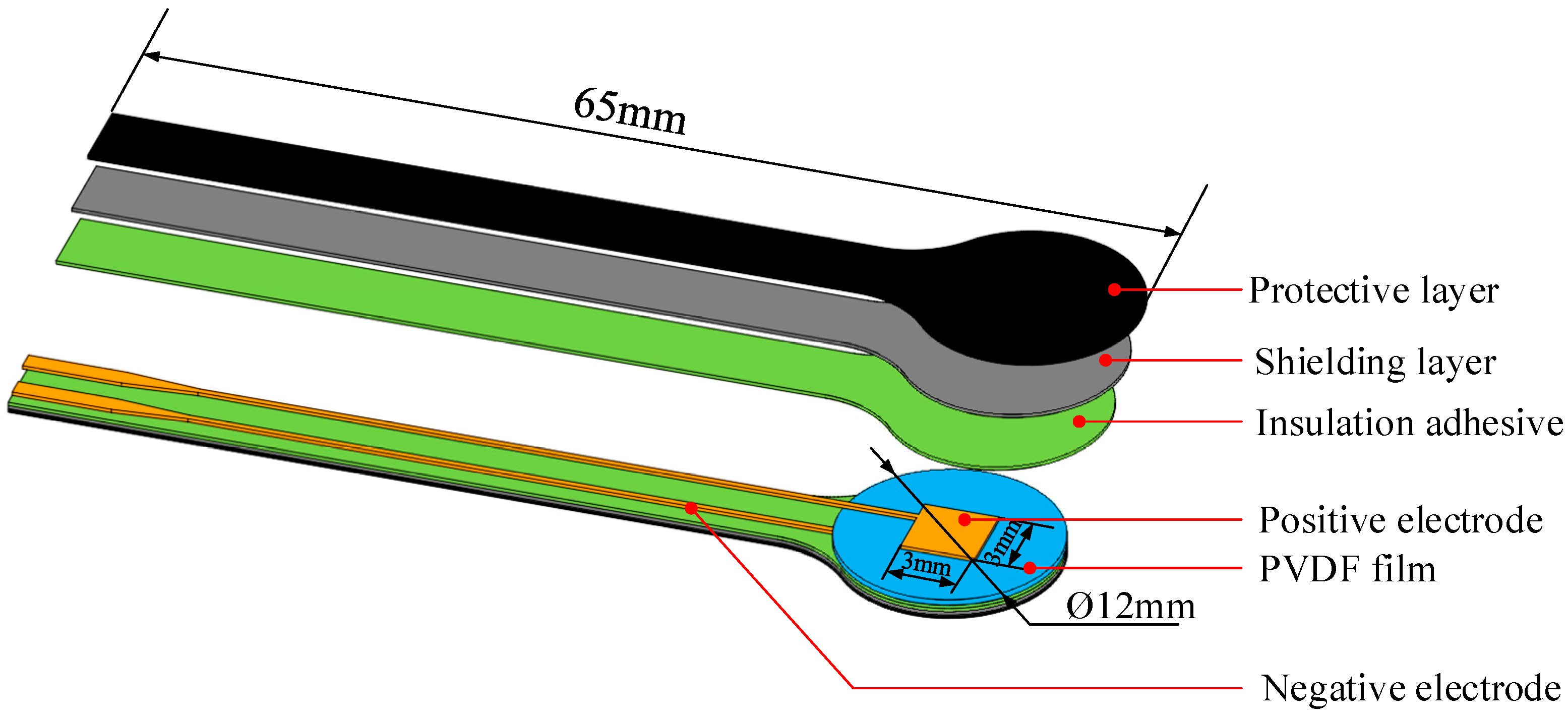


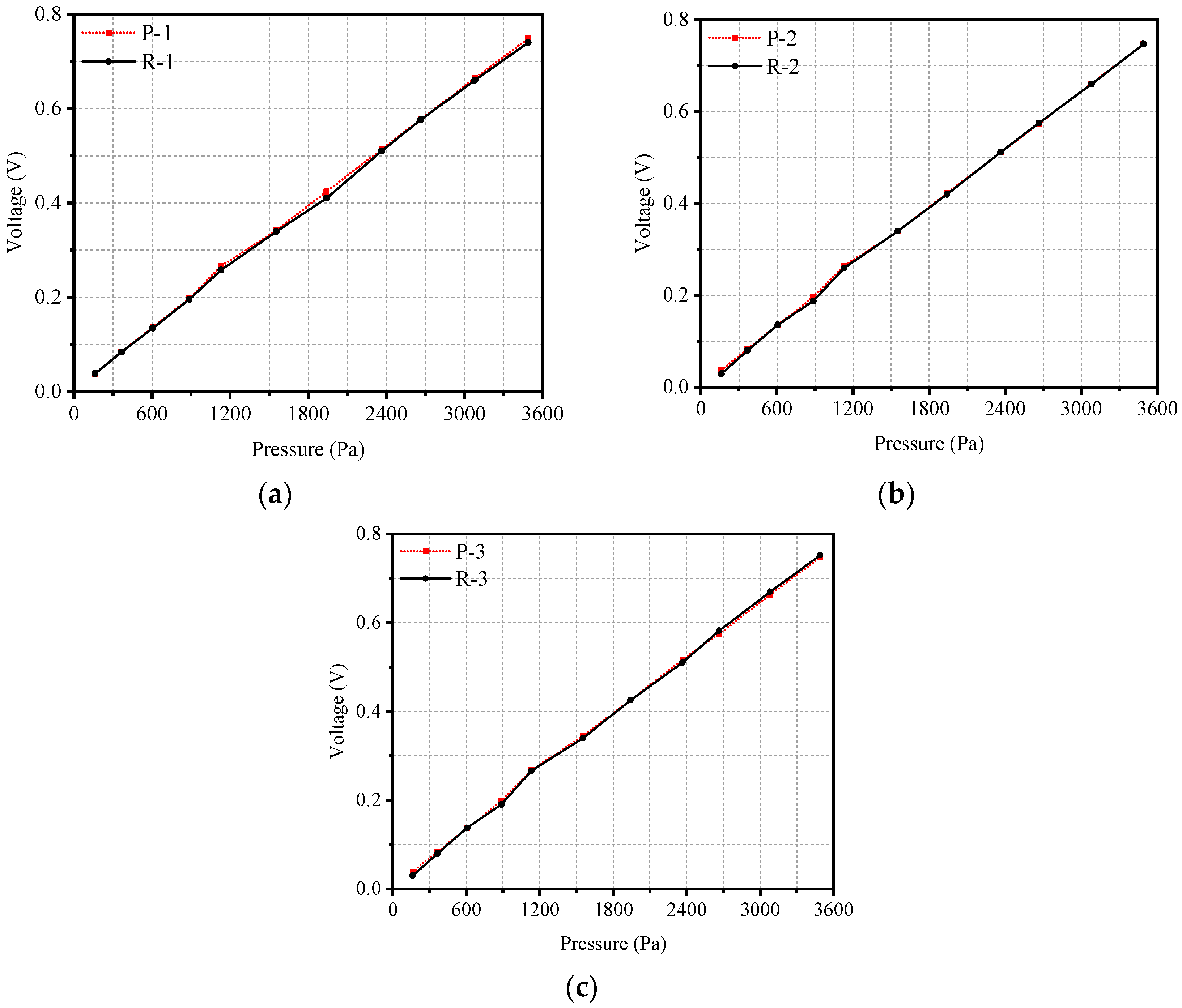
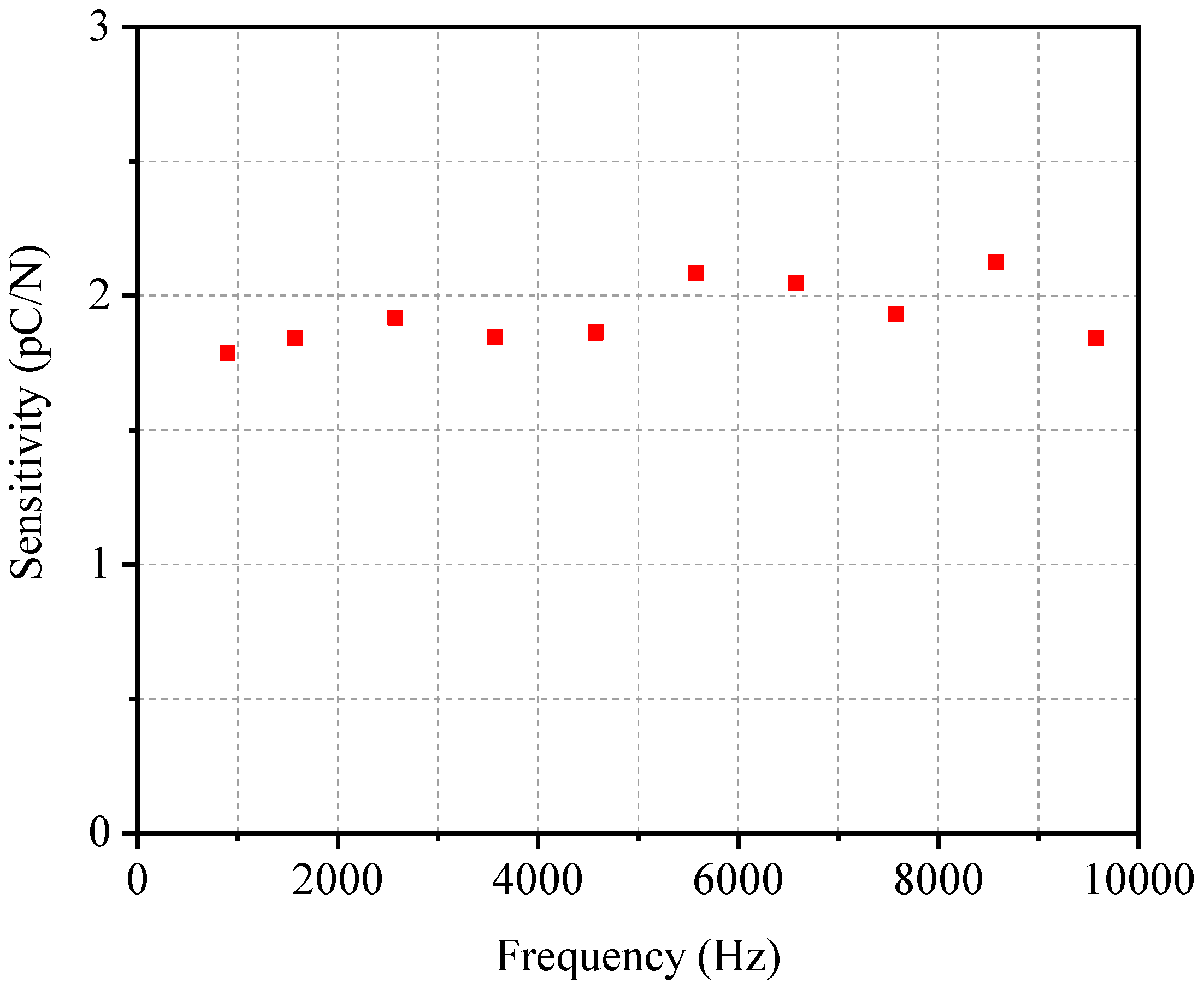
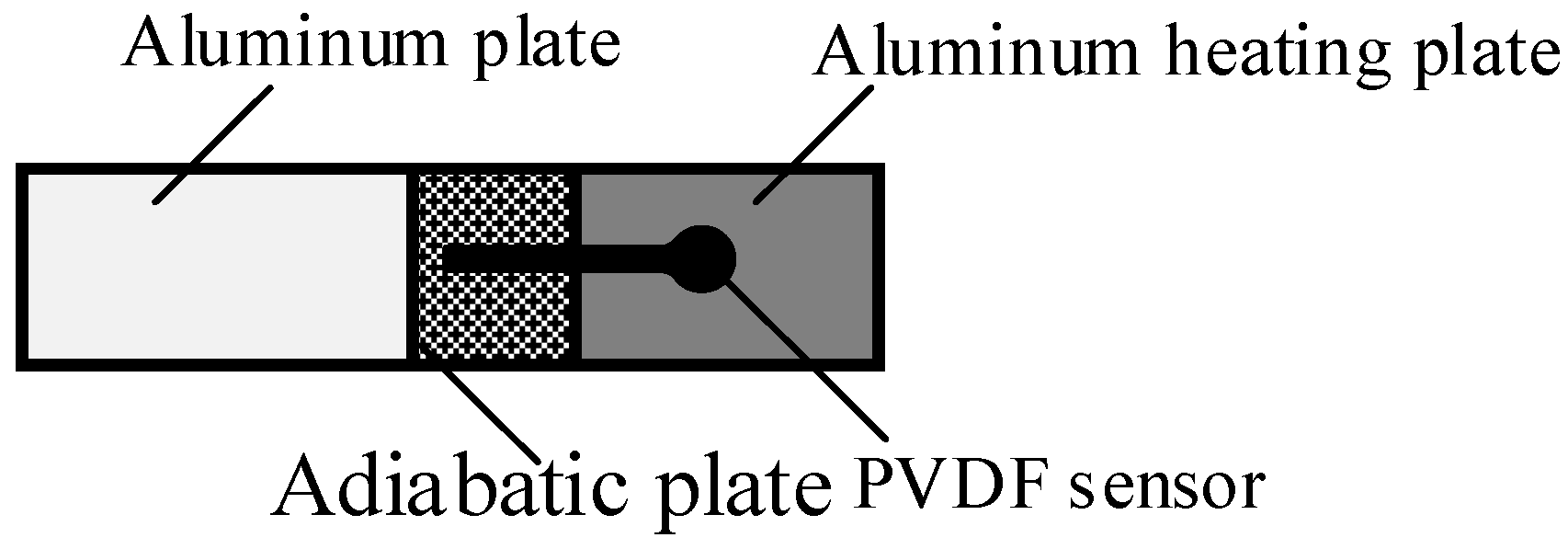
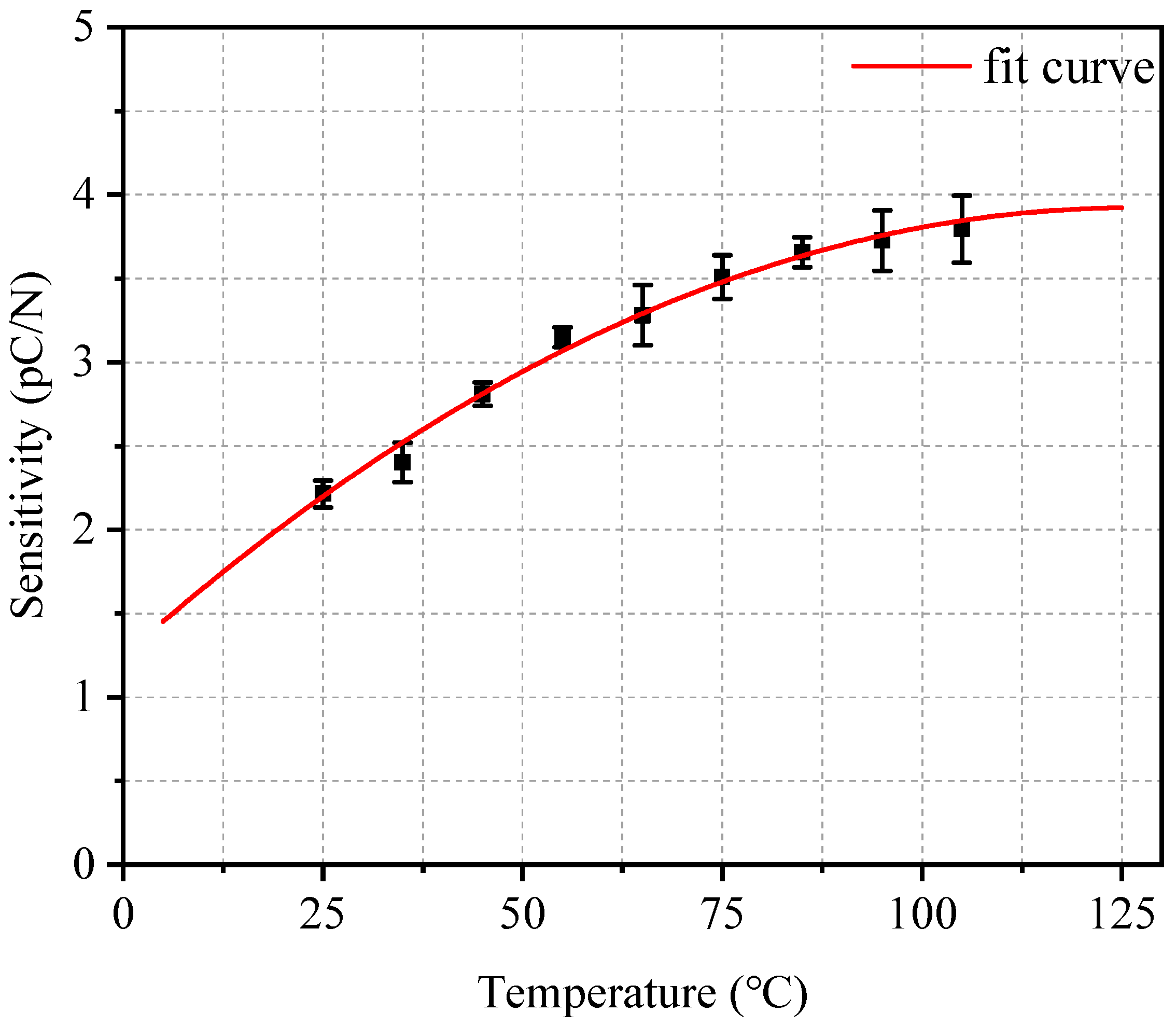
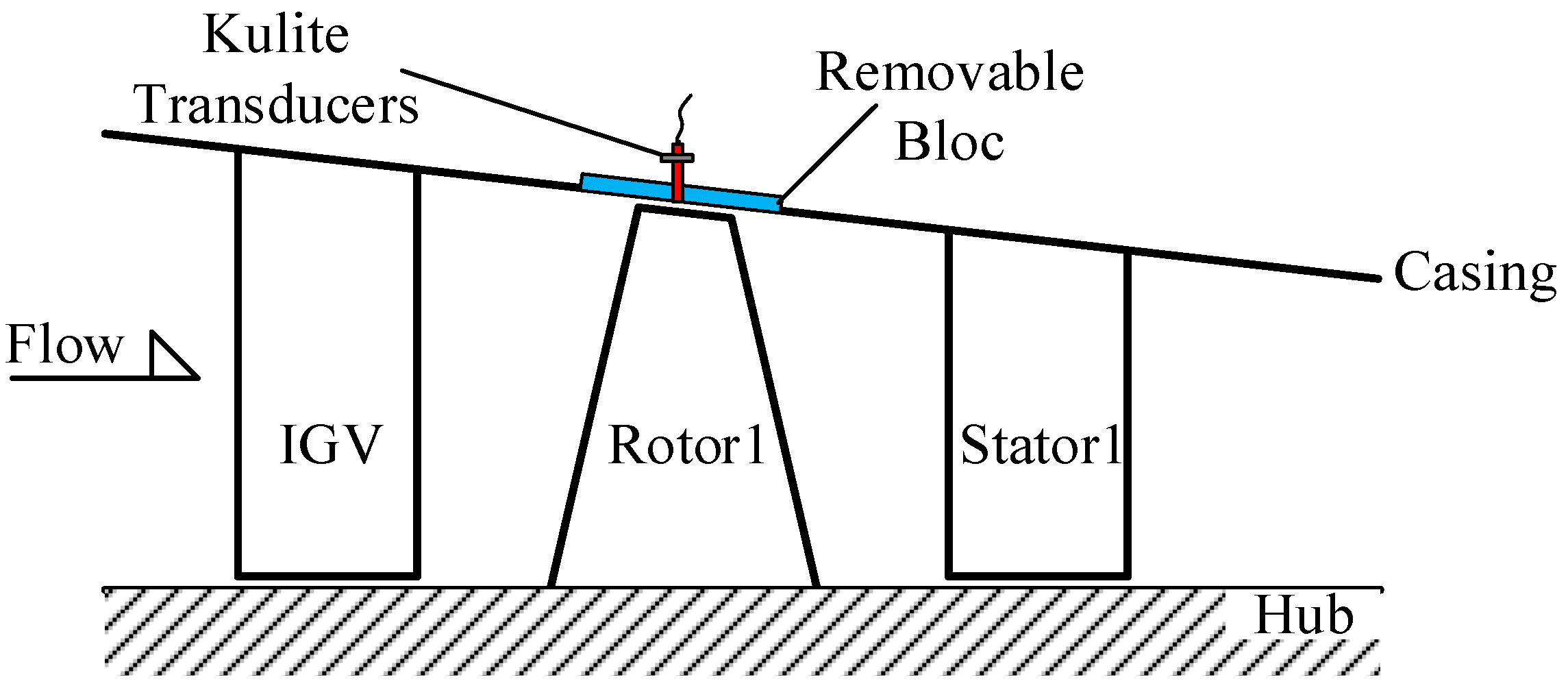
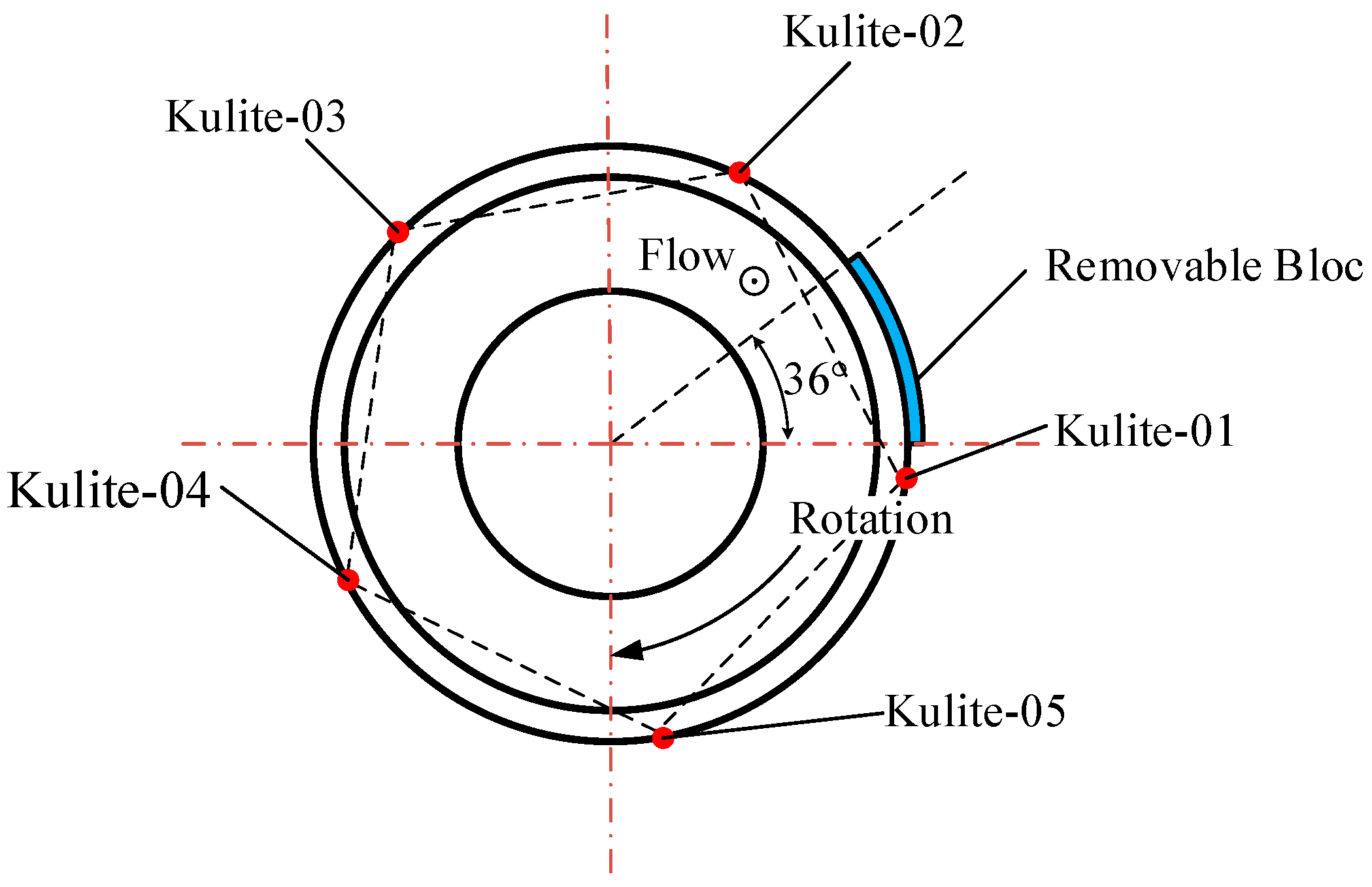


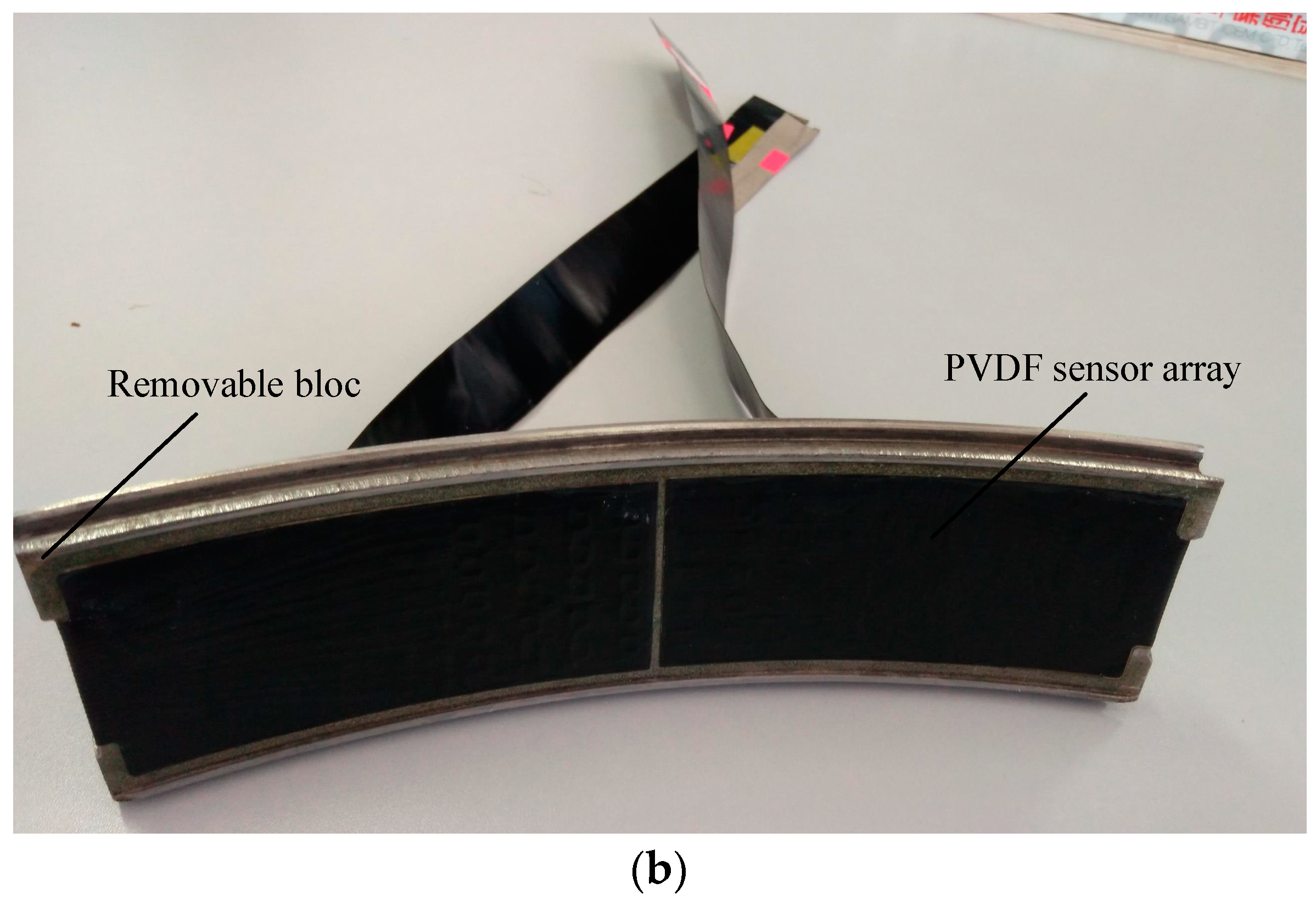
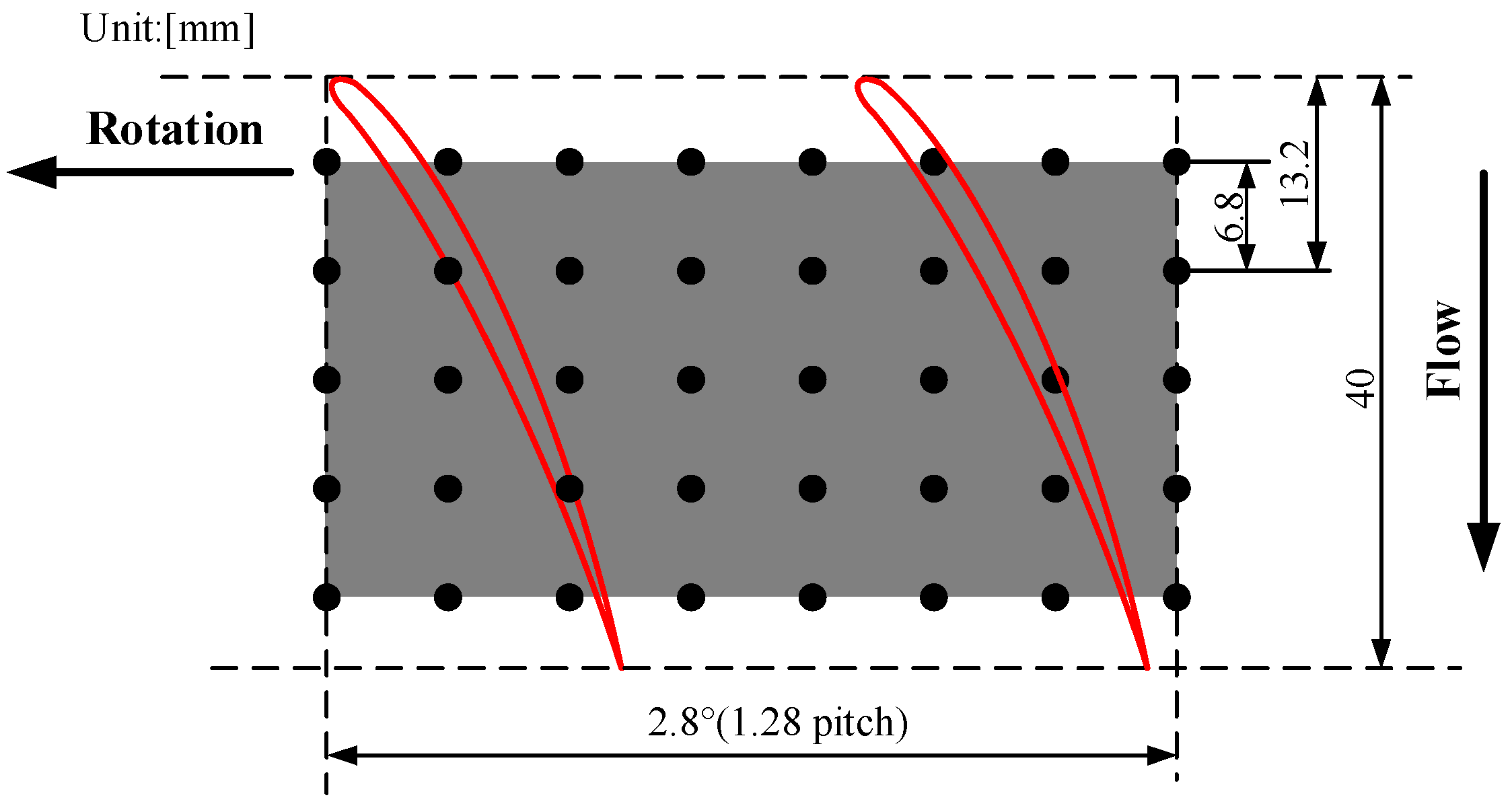

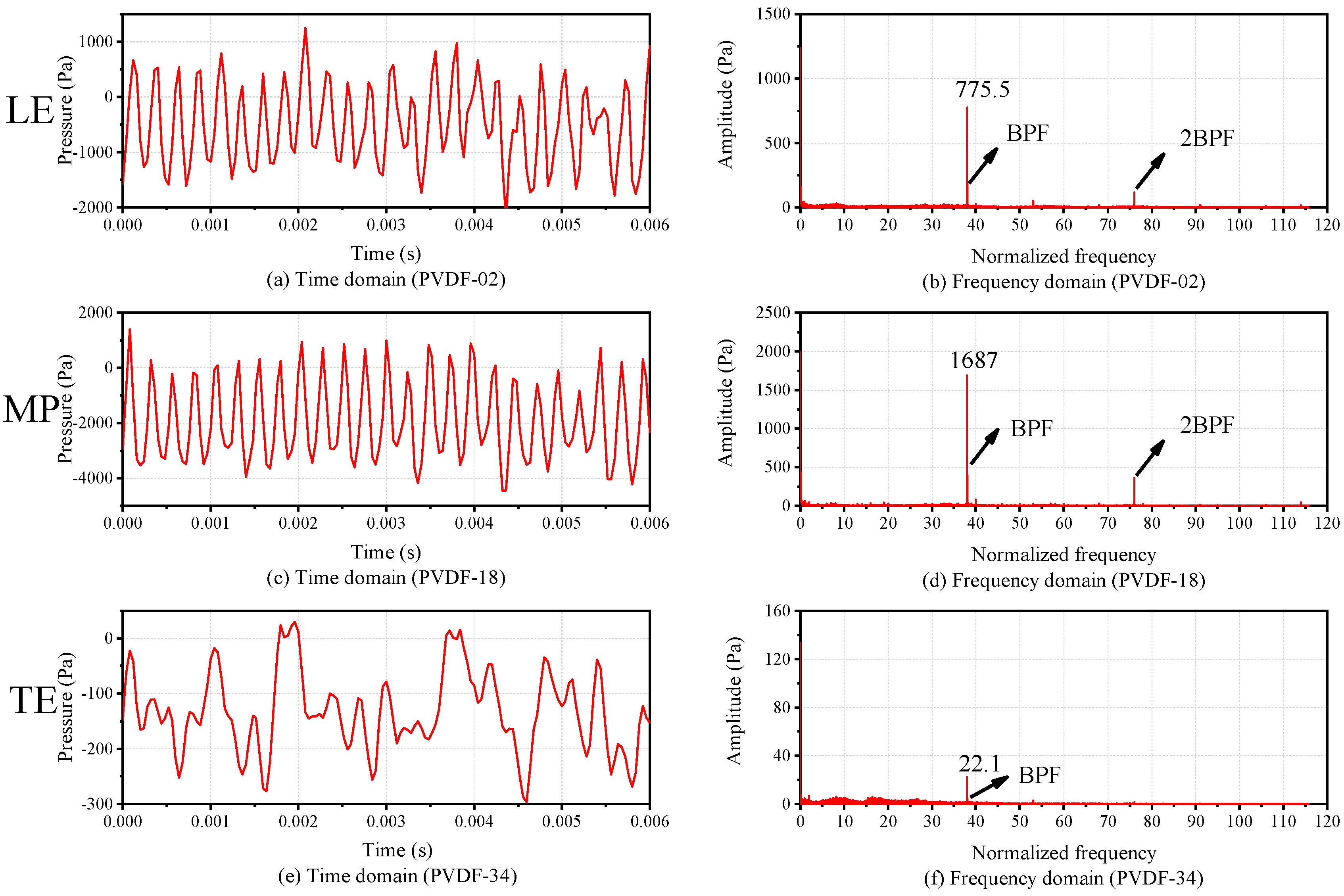

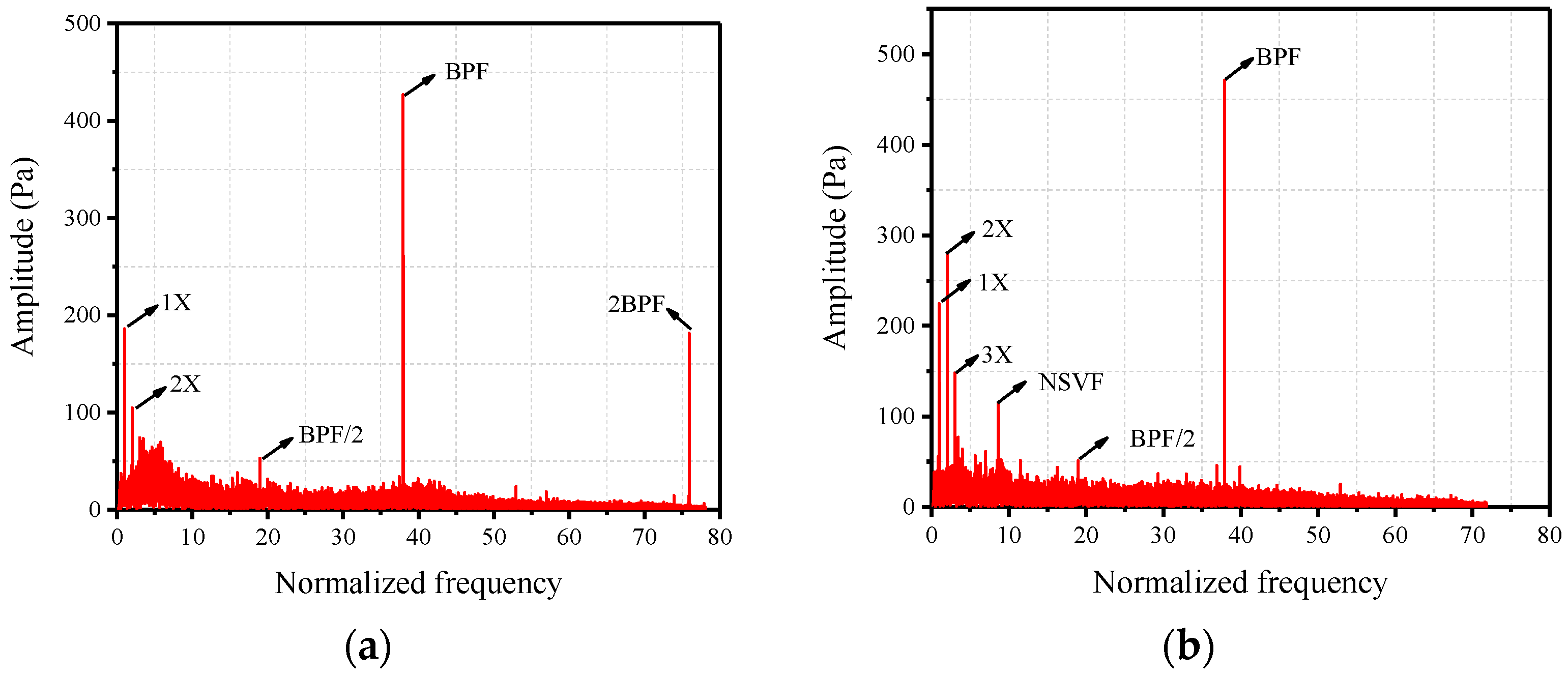
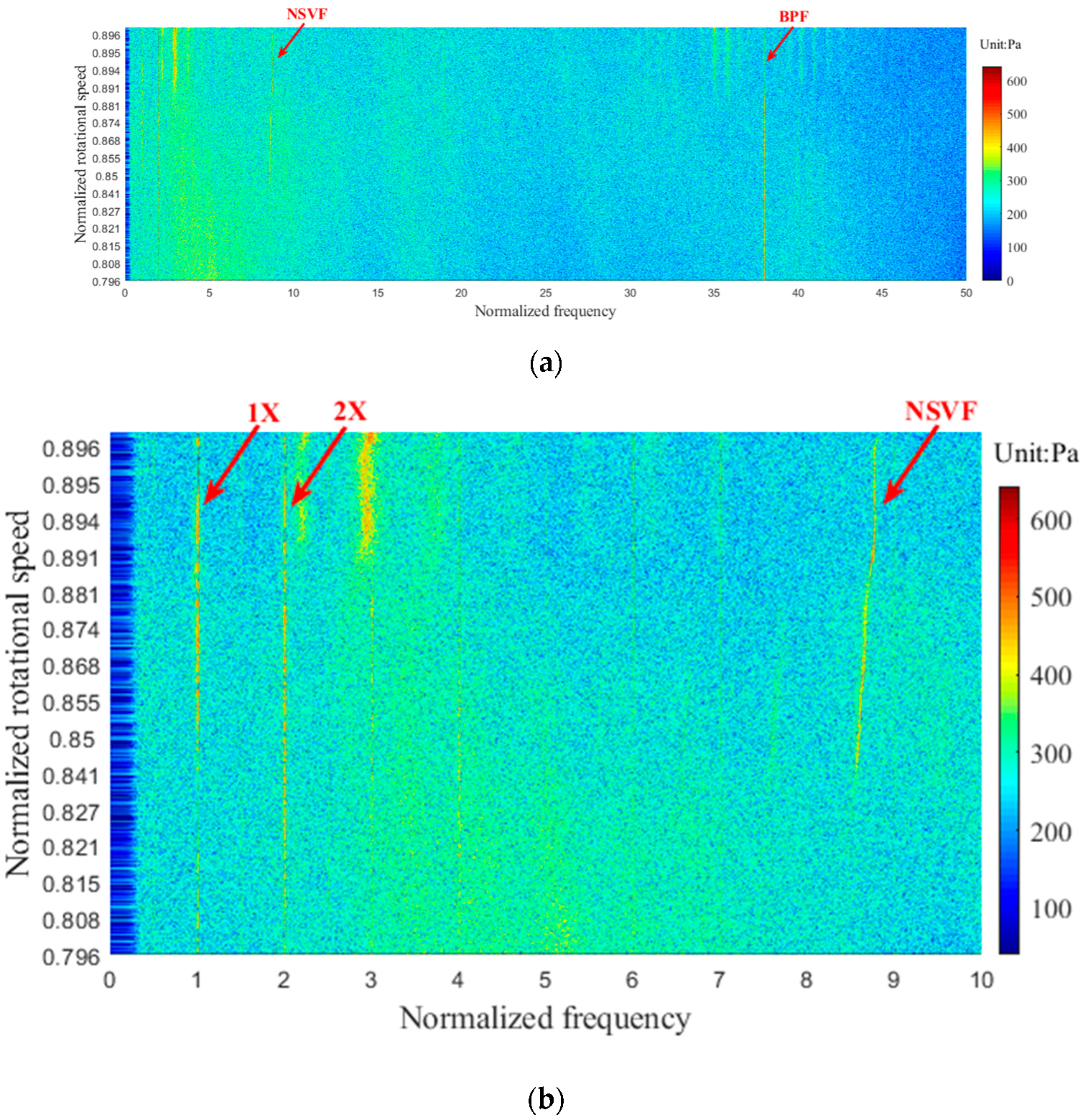
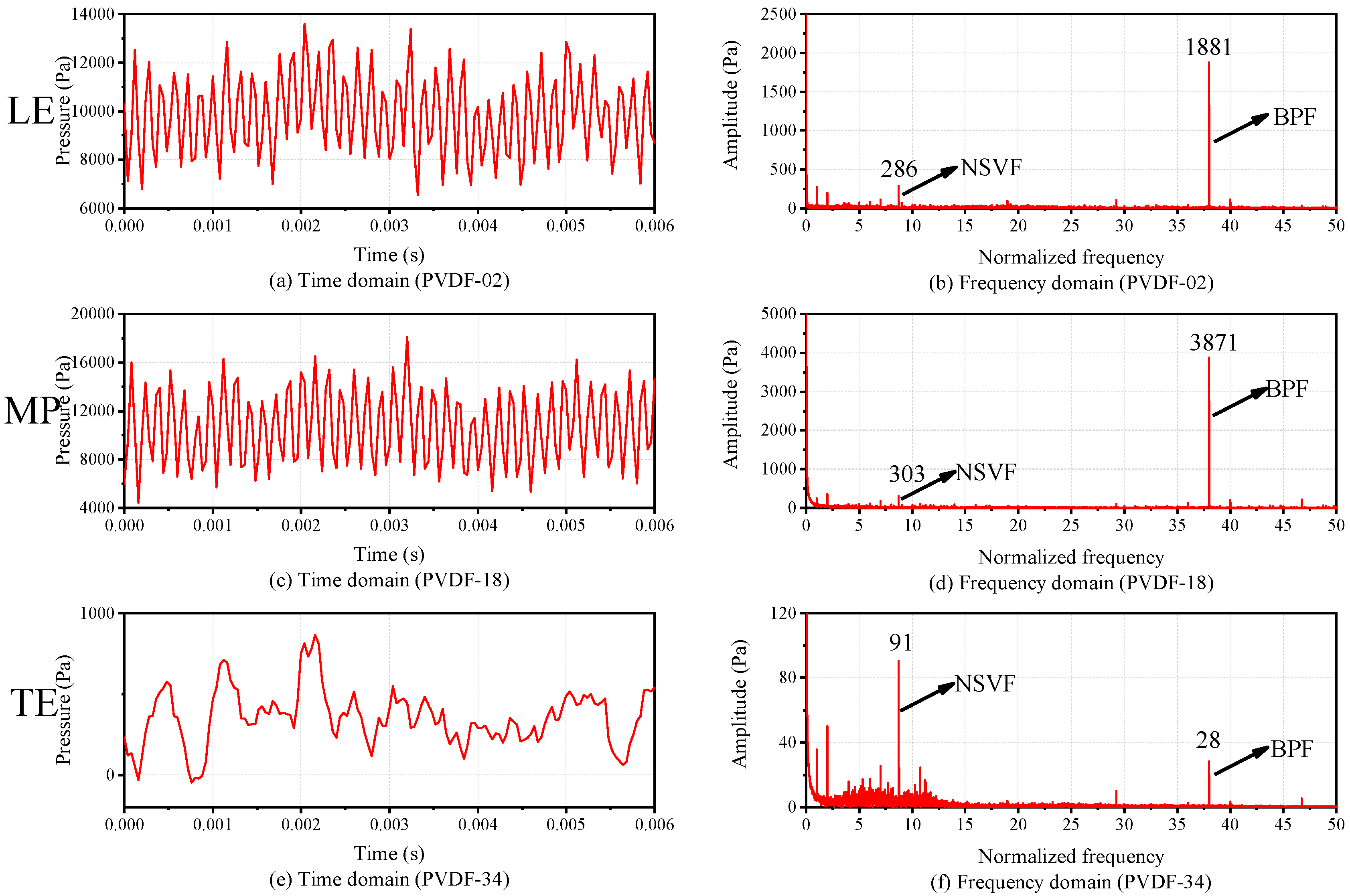
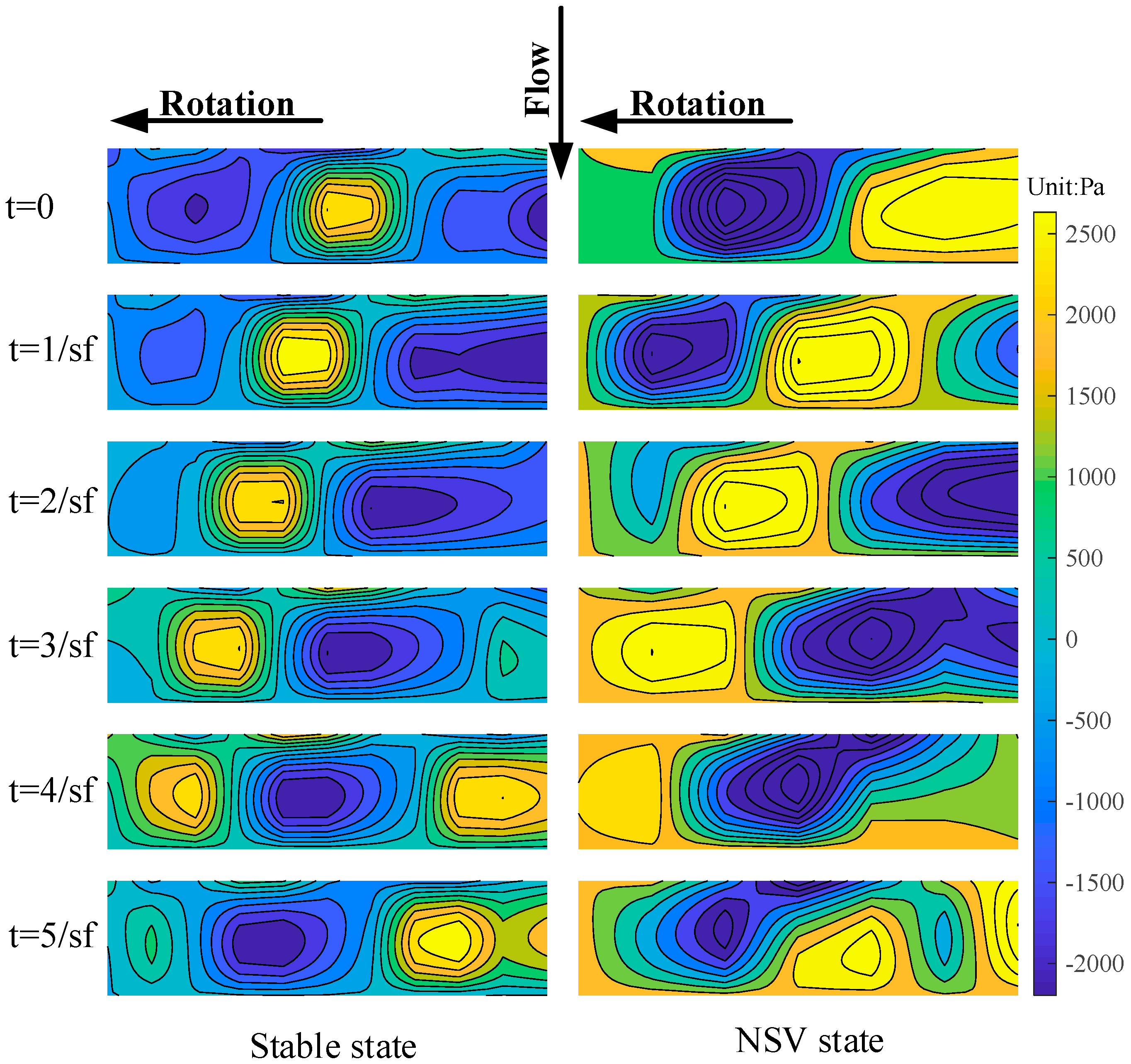
| Items | Units | Value |
|---|---|---|
| Piezoelectric Strain Constant d33 | pC/N | 21 |
| Piezoelectric Voltage Constant g33 | V·m/N | 0.2 |
| Frequency Response | Hz | 10−2 to 108 |
| Pressure Range | Gpa | 0 to 20 |
| Acoustic Impedance | Pa·s/m3 | 2.5–3 × 105 |
| Yield Strength | N/m2 | 45–55 × 106 |
| Density | kg/m3 | 1.78 × 103 |
| Poisson’s Ratio | 0.3 | |
| Operating Temperature Range | °C | −40 to 80 |
| Thickness | µm | 30 |
| Sensor | PVDF Sensor | Kulite XCQ-062 | Kulite LQ-062 | Endevco 8507C-15 | Endevco 8515C-50 |
|---|---|---|---|---|---|
| Picture |  |  |  |  |  |
| Operational Mode | Gage | Absolute, Sealed Gage | Absolute, Sealed Gage | Gage | Gage |
| Price (RMB) | 500 | 9600 | 9500 | 16,000 | 12,000 |
| Installation | Glued on the surface | Flush mounted | Glued on the surface | Flush mounted | Surface-mounted |
| Frequency response (Hz) | tested up to 10 kHz | 0–2 × 105 | 0–2 × 105 | 0–2.6 × 104 | 0–6.4 × 104 |
| Diameter (mm) | ≥2.3 mm | 1.7 | 1.6 | 2.3 | 6.3 |
| Thickness/Length 2 (mm) | 0.36 | 9.5 | 0.76 | 12.7 | 0.76 |
| Pressure range (PSI) | tested up to 3.5 kPa | 1000 | 1000 | 15 | 50 |
© 2019 by the authors. Licensee MDPI, Basel, Switzerland. This article is an open access article distributed under the terms and conditions of the Creative Commons Attribution (CC BY) license (http://creativecommons.org/licenses/by/4.0/).
Share and Cite
Cong, J.; Jing, J.; Chen, C.; Dai, Z. Development of a PVDF Sensor Array for Measurement of the Dynamic Pressure Field of the Blade Tip in an Axial Flow Compressor. Sensors 2019, 19, 1404. https://doi.org/10.3390/s19061404
Cong J, Jing J, Chen C, Dai Z. Development of a PVDF Sensor Array for Measurement of the Dynamic Pressure Field of the Blade Tip in an Axial Flow Compressor. Sensors. 2019; 19(6):1404. https://doi.org/10.3390/s19061404
Chicago/Turabian StyleCong, Jiqing, Jianping Jing, Changmin Chen, and Zezeng Dai. 2019. "Development of a PVDF Sensor Array for Measurement of the Dynamic Pressure Field of the Blade Tip in an Axial Flow Compressor" Sensors 19, no. 6: 1404. https://doi.org/10.3390/s19061404






